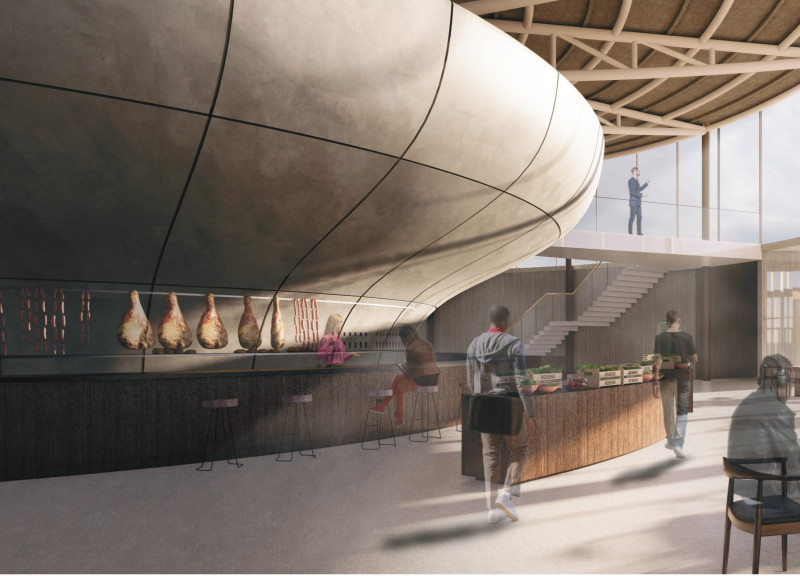5 key facts about this project
The "Circle of Dining" architectural project is developed for a restaurant situated at the Myvatn Nature Baths in northeastern Iceland. This project embodies the principles of sustainability and local agricultural integration, creating a unique dining environment where the connection between food production and consumption is emphasized. The design incorporates functional areas that include a dining space, a farm, and a slaughterhouse, all interconnected to enhance the user experience.
The primary function of the “Circle of Dining” is to provide patrons with a clear understanding of the process of farm-to-table dining. The layout promotes transparency, inviting guests to witness firsthand how their meals are sourced and prepared. This approach not only fosters appreciation for local food sources but also encourages sustainable practices and community involvement.
Unique Design Approaches
One notable aspect of this project is its circular layout, which is designed to facilitate movement and interaction among different functional areas. The dining space is strategically positioned with expansive glass windows, offering unobstructed views of the surrounding landscape while maximizing natural light. This not only enhances the dining experience but also integrates the interior with the exterior environment.
Incorporating a farm and a slaughterhouse within the restaurant design is unconventional. This integration allows for an educational experience where patrons can learn about sustainable farming practices and the ethical treatment of livestock. The design promotes a clear understanding of the food chain, which is often obscured in traditional dining establishments.
Material choices are another focal point of the project. The use of local wood provides warmth and a natural aesthetic that aligns with the surrounding landscape. Concrete structures ensure durability for high-demand areas, while large glass panels offer transparency and connection to the external environment. These materials are selected not only for their functional properties but also for their ability to resonate with the project's sustainability ethos.
Functional Integration
The design distinctly separates areas for food production and dining. The central kitchen space is optimized for efficiency, allowing for seamless movement between food preparation and serving, while the farm area includes humane enclosures for livestock. This design choice minimizes transportation distances, reducing the carbon footprint associated with food sourcing.
Diners navigate through dedicated pathways that guide them from the dining area to the farm and slaughterhouse, encouraging exploration and engagement. This integrated circulation fosters a deep understanding of the dining experience, aligning with the project's educational goals.
The "Circle of Dining" serves not just as a restaurant but as a prototype for future dining establishments that prioritize sustainability and local agriculture. For further insights into this project, including architectural plans and sections that detail the design's functional aspects, readers are encouraged to explore the complete project presentation. This exploration will provide a comprehensive understanding of the architectural concepts and design thinking behind this noteworthy project.






















































